-- From Melbourne to Bendigo
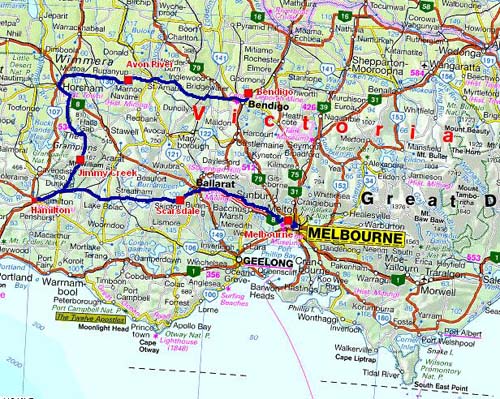
The road tracklog
from Melbourne to Bendigo
from 03/05/2010 to 09/05/2010
Spirit of Tasmania accosted around 6 a.m. and the disembarking started about 6.30 I was on the pier at 6.45 where I remained until 7.10 to study the city map to head to Ashley Gardens Holiday Village. I wandered in suburbs to find the good road, finally I arrived after having drove 30 kilometres during 1hour20. The Caravan Park is supposed to be at 9 km away from town centre, certainly as the crow flies. The city has expressways whose access was not obvious.
After the installation I left to discover Melbourne, CBD - City Business District whose streets are quadrangular. I took bus n°220 to drop off in Queen St and to go to a Visitor Centre to take a harvest of booklets. I strolled by following the Walking Tour of the Lp and by going around. From this first contact I retained old civil and religious buildings dating back to the 19th century and their harmonious integration with modern towers. In front of the State Library of Victoria an Equestrian Statue of Jeanne d' Arc occupied the place of honour, reminiscence of the Franco-British fights! The imposing GPO was transformed recently into shopping mall after a fire.
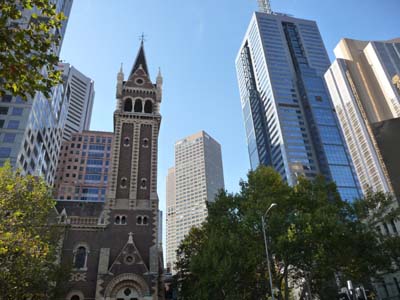
St Michael's Uniting Church
Melbourne
03/05/2010
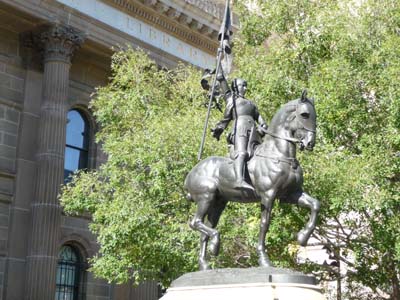
Jeanne d'Arc's statue
Melbourne
03/05/2010

State Library of Victoria
Melbourne
03/05/2010
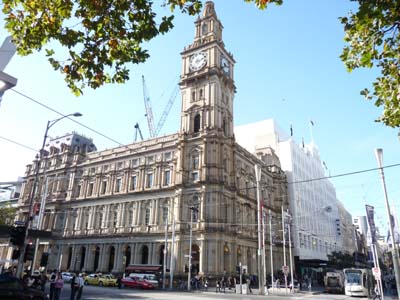
General Post Office, GPO
Melbourne
03/05/2010
Then it was in the west of the CBD the Supreme Court, the Royal Mint and St James Old Cathedral all three prohibited to the public.
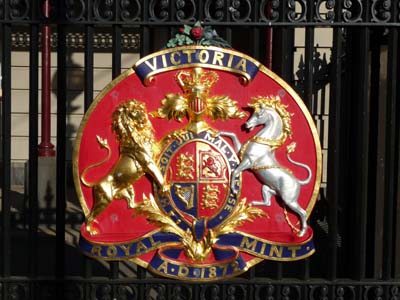
Royal Mint
Melbourne
03/05/2010
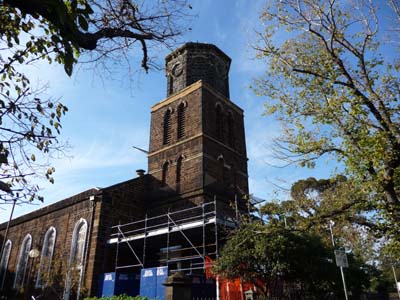
St James Old Cathedral
Melbourne
03/05/2010
By strolling I discovered modern buildings such the Royal Melbourne Institute of Technology's - RMIT- and sometimes strange street scenes.
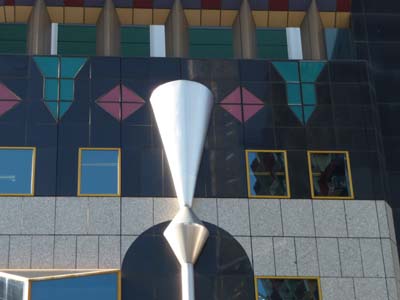
Building RMIT
Melbourne
03/05/2010

Anachronism
Melbourne
03/05/2010
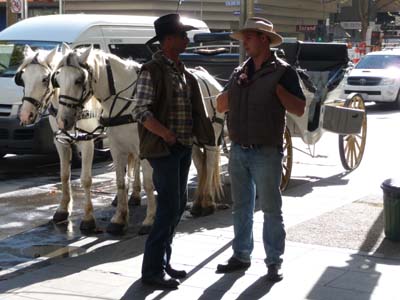
Horse car & cow-boys
Melbourne
03/05/2010
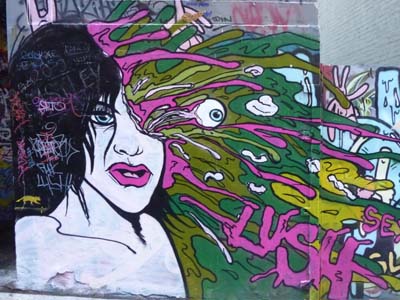
Mural
Melbourne
03/05/2010
The next morning I visited the Melbourne Museum whose highlight is Bunjilaka, Aboriginal Cultural Centre. I spent the end of the morning there. There still the behaviour of the British is openly criticized. In the early afternoon I went shopping to buy guide books of the future visited countries and to renew my wardrobe, and well after four years clothes and shoes were wear out. In the middle afternoon the barometer broke down and a pouring rain fell down.
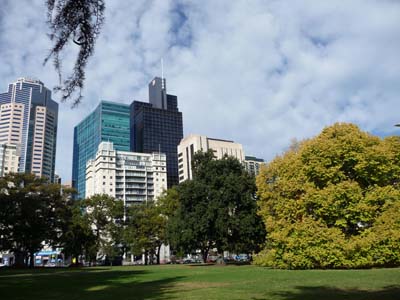
Carlton Gardens
Melbourne
04/05/2010
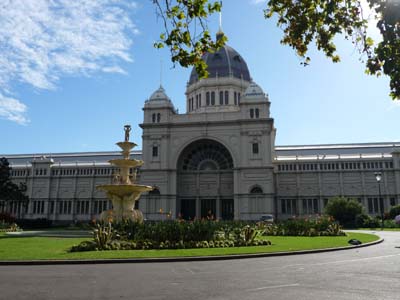
Royal Exhibition Building
Melbourne
04/05/2010
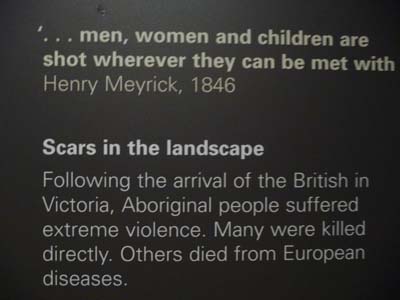
Aboriginal Culture Centre
Melbourne Museum
04/05/2010
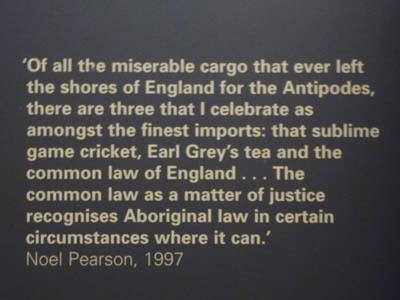
Aboriginal Culture Centre
Melbourne
04/05/2010
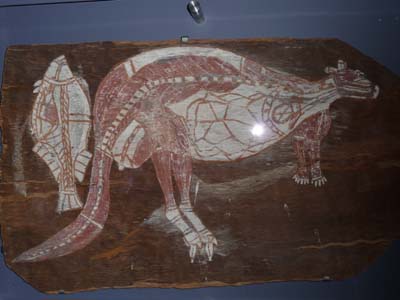
Aboriginal Culture Centre
X-ray art
Melbourne Museum
04/05/2010
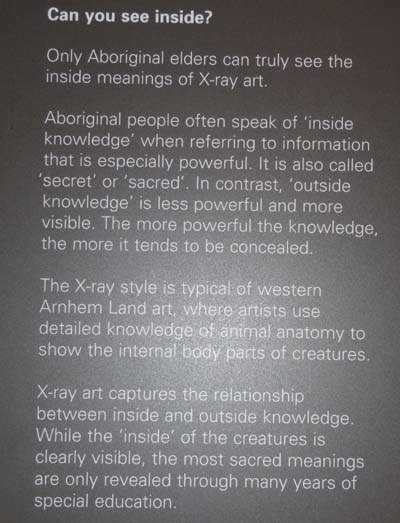
Aboriginal Culture Centre
Melbourne
04/05/2010
Again on Wednesday 05 was a shopping day by visiting around. In the district of the Parliament I admired the cast iron balconies of Tasma Terrace. At side the entry of the St Patrick's Cathedral was prohibited, , for vehicles. It was built between 1858 and 1897 in the revival Gothic style. Then a last photograph of Melbourne from the Yarra River with Flinders Station and St Paul's Cathedral, see the Gallery-3.
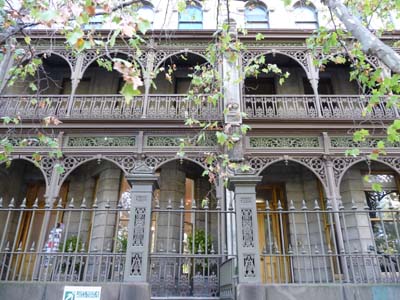
Tasma Terrace
Melbourne
05/05/2010
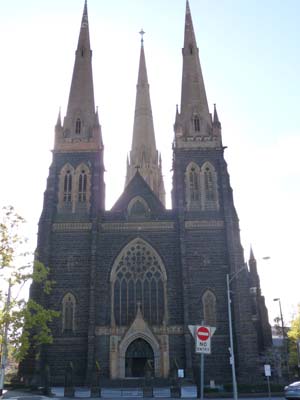
St Patrick's Cathedral
Melbourne
05/05/2010
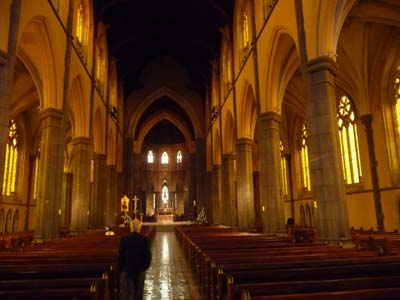
St Patrick's Cathedral
Melbourne
05/05/2010
The 06/05 I stopped lengthily in Ballarat as being the cradle of the democracy in Australia. Its history is known under the name of Eureka Stockage on December 3, 1854. I visited the site of Eureka Stockage and the museum contiguous to the Visitor Centre. The history started with the exorbitant cost of the license of gold extraction – Gold License– required by the colonial administration and ended with the massacre of miners by the British army. The Eureka's flag was the symbol of the victory of the democracy.
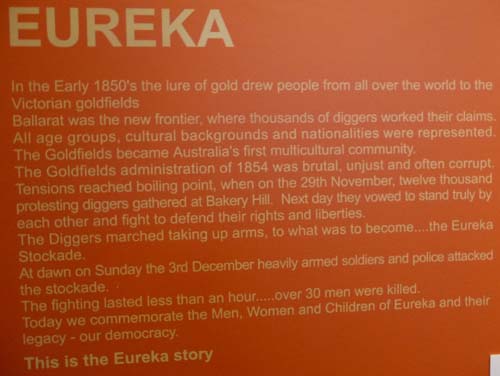
Eureka Stockade
Ballarat
06/05/2010

Eureka Stockade
Ballarat
06/05/2010

Eureka Stockdale
Ballarat
06/05/2010
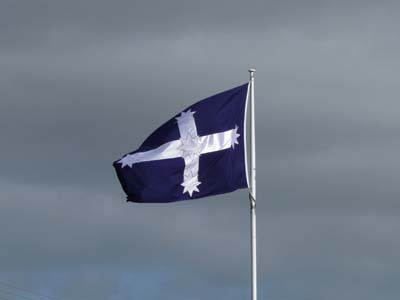
Eureka's Flag
Ballarat
06/05/2010
Sovereign Hill is the reconstitution of the life in a city of the gold-fields in the middle of the 19th century. It is a living museum managed by a not-for-profit community owned organization. Beside a Gold Museum exhibits copies of the largest nuggets – 60 kilos of gold–, pictures of the era as well as miners as the town of Ballarat.

Sovereign Hill
Ballarat
06/05/2010
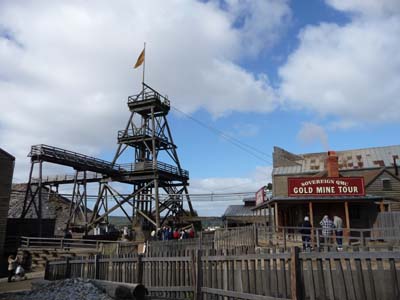
Sovereign Hill
Ballarat
06/05/2010
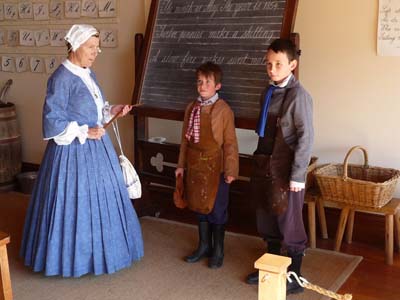
Sovereign Hill
Ballarat
06/05/2010
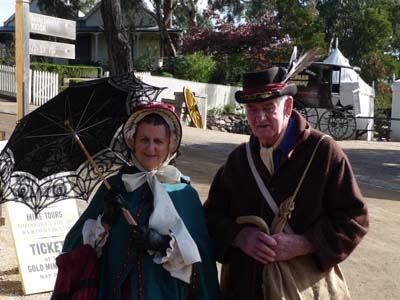
Sovereign Hill
Ballarat
06/05/2010
The day before after arriving at the bivouac during the daily
check-in of the lower parts of my truck I had discovered that the nitrogen
tank of the right-hand shock absorber was covered with an oily
substance. I looked at the source without identifying it. I thought, alas,
an oil leakage of the shock absorber. I had decided to head to the nearest
MAN workshop, there was one in Hamilton which I asked to check it. It was
cleaned with high pressure then it was asked me to drive during ten kilometres
and to return for a new control. For the specialist there was no
leakage. I left reassured but circumspect as for the source of the
greasy substance, to supervise.
As envisaged I moved towards Grampians famous for the beauty of the
landscapes. Of course weather was very cloudy and a fine rain fell. But trustful,
into mountain weather changes very quickly, I persisted in my project. I
bivouacked at Jimmy Creek in a muddy camp-site.

En route
Grampians
07/05/2010
At the entry of Halls Gap, town in Grampians only made up hotels, resorts and of campgrounds, Brambuk – The National Park & Cultural Centre– tells with pictures of era the spoliation of the Aboriginal lands by the British administration by applying the principle of Terra Nullius then their sale to settlers. The enclosure of the properties prohibited the access to Aboriginals, the contraveners were imprisoned or disappeared inopportunely. Other pictures explain the massacre of thousands of Aboriginals. Some pictures obviously show the arrogance of the British vis-a-vis the Aboriginals.
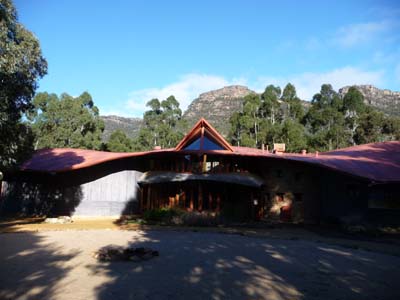
Brambuk
Grampians NP
08/05/2010
The Grampians MP is unique in Australia by rugged mountains, spectacular waterfalls, fauna and flora, not to mentioned Aboriginal rock art sites. I crossed it by visiting some of geological sights around. In Boroka Lookout the sight on Victoria Valley and Lake Wartook are stunning. Further on The Balconies offers a dramatic spectacle on the Grampians mountains. Finally Mackensie Falls is astonishing. Grampians NP is worst largely than a short day, many trekking tracks offer unforgettable moments when weather, climatic, allows it and time, the duration, too. Alas it was not the case in spite of a sunny morning promising. I continued my way to a bivouac at 25 km far away St Arnaud.
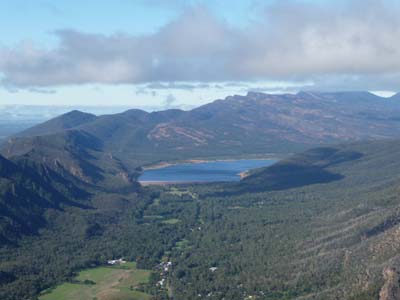
Boroka Lookout
Grampians NP
08/05/2010
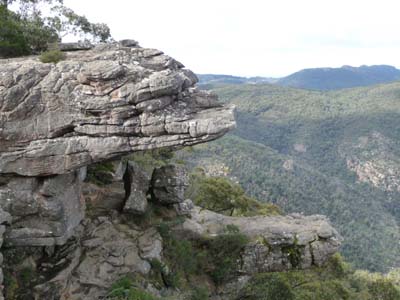
The Balconies
Grampians NP
08/05/2010
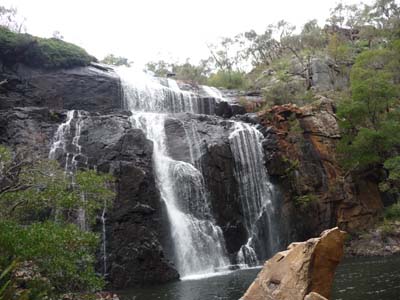
Mackensie Falls
Grampians NP
08/05/2010
On Sunday May 09 on the way to Bendigo I stopped in St Arnaud to seize the architecture of Gold Rush in 1850's. In a park I saw a bronze statue, that of the Marshal St Arnaud who gave his name to this miner's town. By reading the epitaph I had the reflection that the Franco-Britannic relations were, are and will be always: I love you I do no more. The toponymy of cities reveals sometimes surprises.
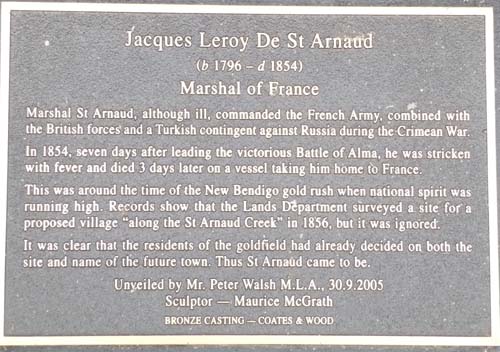
St Arnaud
09/05/2010
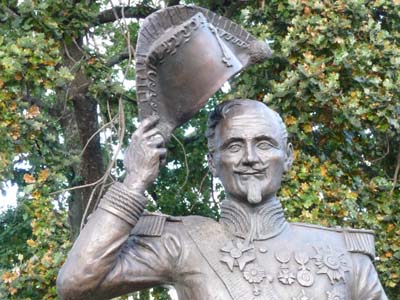
St Arnaud
09/05/2010
Bendigo was a very important city as from 1850's at the era of the gold rush. The mining companies poured money into the administration which built sumptuous buildings of Victorian style which grace the city today.
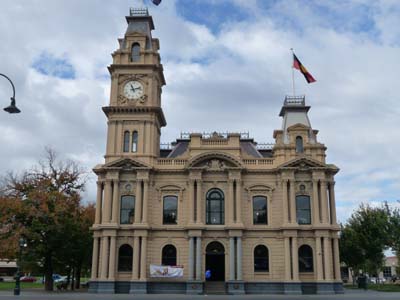
Town Hall
Bendigo
09/05/2010
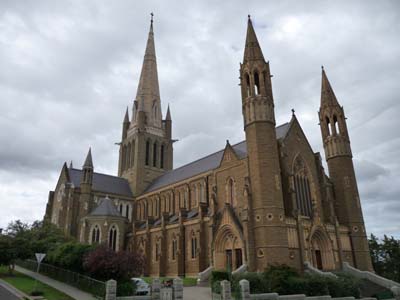
Sacred Heart
Cathedral
Bendigo
09/05/2010
In 1854 the arrival of Chinese from Canton led to the exile by the opium war and the discharge of the European products marked for ever the aspect of the city, the Golden Dragon Museum tells their history. Sun Loong is the world longest processional dragon.
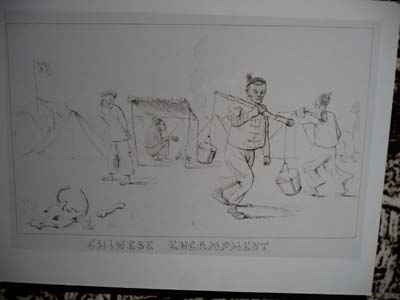
Chinese encampment
Golden Dragon Museum
Bendigo
09/05/2010
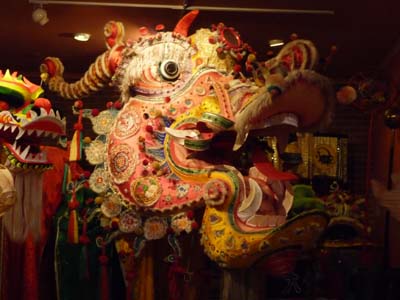
Sun Loong
Golden Dragon Museum
Bendigo
09/05/2010
After arriving at the bivouac I checked the right-hand shock absorber, there was an oil leakage well of which I detected finally the origin. The hose connection between the shock absorber and nitrogen tank, although sheathed with a steel braid, had been abraded by vibrations on a bolt retaining protections of sound-proofing of the engine. Consequently I decided to drive back to Melbourne to consult a MAN workshop on the possibility of changing this hose connection.